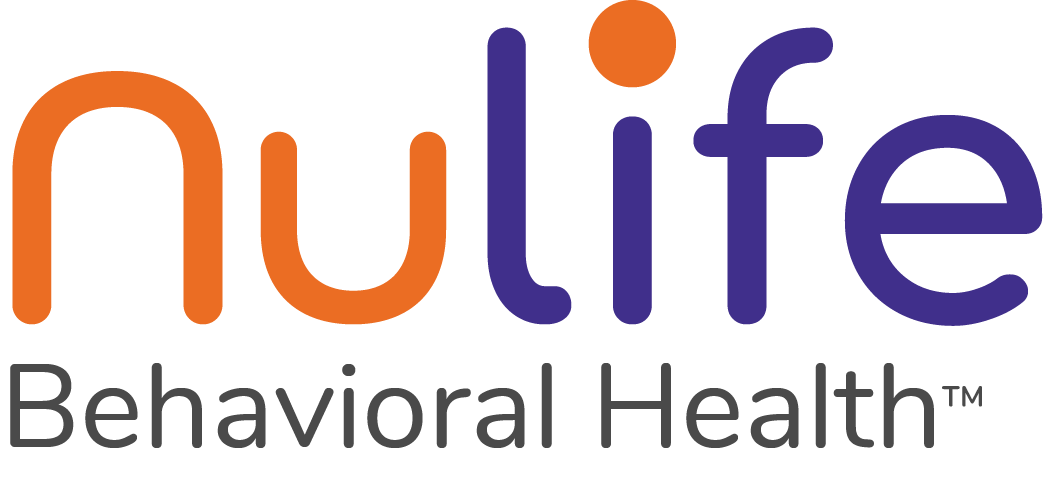Opioid addiction remains a public health crisis that’s wreaking havoc on millions of people in the US. Three million Americans in any given year either have an active opioid addiction or have experienced it. Seventy-five percent of all overdose deaths in the U.S. involve opioids. If you’re concerned about yourself or a loved one, this article will discuss what opioids are, how opioid addiction happens, and how to get opioid addiction treatment in the Chicago area.
What Are Opioids?
Opioids comprise a family of drugs that includes legal painkillers like oxycodone and illicit substances such as heroin. While they are primarily used for pain relief, all opioids carry the risk of addiction.
These are the most common legal opioids:
Codeine: A weaker opioid often found in select prescription cough suppressants and painkillers.
Hydrocodone (Such as Vicodin and Norco): Typically employed for mild to moderate pain, it’s not as potent as oxycodone
Morphine (Such as MS Contin and): Regularly used in medical facilities, it’s among the most effective opioids for treating intense pain.
Oxycodone (Such as OxyContin and Percocet): Often used to manage severe pain, particularly after surgeries.
Fentanyl (Such as Actiq and Duragesic): Extremely powerful and generally reserved for the treatment of severe pain. Illicit forms are very dangerous and a primary contributor to overdoses. Even touching fentanyl can be hazardous.
Methadone (Such as Dolophine and Methadose): Used in treatments aimed at helping people lessen or cease their use of heroin or other opiates.
Tramadol (Such as Ultram): Used for treating mild pain, it’s less potent than other opioids, but addiction is still a concern.
Morphine, heroin, fentanyl, oxycodone, and hydrocodone are the most commonly abused opioids. Heroin is profoundly addictive and may be taken in pill form, but people typically inject it with a hypodermic needle.
How Does Opioid Dependency Develop?
Prescription drug addiction is common and often begins with a legitimate need for prescription-strength pain medication. However, opioids can produce intense euphoria. These pleasurable effects, combined with the body’s growing demand for the drug, can lead to misuse.
Escalating Tolerance: Users need escalating doses to feel the same effects, increasing the risk of overdose.
Dependence: Over time, the body starts to depend on the drug for normal functioning. Eventually, a person addicted to opioids will need to take high doses of the drugs just to hold off withdrawal.
Emotional Triggers: Mental health challenges can contribute to the development of addiction, including the need to manage anxiety.
Addiction to opioids often starts with a legitimate medical requirement but can escalate due to physical dependence and emotional triggers. Escalating tolerance to the drug also increases the risk of overdose.
How Do People Get Opioids?
Opioids can be obtained both through medical channels and illegally. While some drugs are medically prescribed, others, like heroin, are banned for sale or use in the US.
Medical Administration: Healthcare providers may dispense opioids for managing pain.
Unlawful Acquisition: Opioids can also be bought illegally through black-market transactions or using another person’s prescription.
Non-Prescription Availability: In some countries, milder opioids like codeine are available without a prescription, although this is not the case in the United States.
How Do People Use Opioids?
Opioids can be consumed in various ways, including tablets, injections, and transdermal patches.
Tablet Form: This is the most common method, including medications like oxycodone.
Injectable Solutions: In healthcare settings, opioids may be administered via injection for immediate relief.
Transdermal Patches. Slow-release skin patches like those containing fentanyl are used for ongoing pain control.
What Are the Signs of Opioid Addiction?
Here are some signs of opioid addiction to watch for:
Behavioral Changes
Social Withdrawal. People abusing opioids may start to distance themselves from friends and family, avoiding social events they once enjoyed. This isolation can be a significant red flag.
Neglected Responsibilities. Tasks and duties at work, school, or home may be ignored or poorly executed. This neglect often correlates with the onset or escalation of substance abuse.
Physical Symptoms
Drowsiness and Fatigue. Excessive sleepiness or constant tiredness can indicate opioid misuse. This symptom often interferes with daily activities and responsibilities.
Weight Fluctuations. Sudden and unexplained weight gain or loss can be an indicator. These weight changes can be due to altered eating habits or metabolic changes caused by drug use.
Frequent Illness. Individuals may exhibit flu-like symptoms such as nausea, vomiting, or general malaise. These symptoms can be a body’s response to or withdrawal from the drug.
Psychological Signs
Mood Swings. Rapid emotional changes, ranging from periods of euphoria to bouts of depression, can be a clear indicator. These mood swings can be unpredictable and extreme.
Increased Anxiety. Heightened stress or anxiety levels may manifest, even in situations that wouldn’t typically cause such a reaction. This increased anxiety can be both a side effect of opioid use and a driving factor in continued misuse.
Financial Red Flags
Unexplained Expenses. Money may start disappearing, or there may be frequent, unexplained withdrawals from bank accounts. These financial inconsistencies often point to funds being diverted for purchasing opioids.
What Happens During an Opioid Overdose?
An overdose of opioids is a life-threatening event. Symptoms to be aware of include:
Impaired Breathing. Many opioid deaths happen when a person’s breathing becomes shallow or labored.
Unresponsiveness. The individual may be unconscious or unresponsive to external stimuli.
Bluish Discoloration of Lips and Nails. Grey, blue, or bluish lips and nail beds indicate a critical lack of oxygen in a person’s bloodstream. This warning sign indicates the need for immediate medical attention help.
Symptoms of an opioid overdose include impaired breathing, unresponsiveness, and bluish discoloration of lips and nails. Immediate medical intervention is required. If these symptoms show up, call 911.
What Are the Symptoms of Withdrawal?
Withdrawal from opioids can be a challenging experience and includes:
Physical Discomfort. Common symptoms include muscle spasms, cramps, nausea, vomiting, and sweating.
Psychological Challenges. Emotional well-being deteriorates during withdrawal, including heightened anxiety.
Intense Cravings. Cravings are powerful urges to use the drug again to alleviate discomfort.
Withdrawal from opioids includes physical discomfort, psychological challenges, and intense cravings for the drug. Medical supervision is often essential.
How Is Opioid Addiction Managed?
Management often involves a blend of medical and psychological strategies.
Medications. Medications like methadone can help manage withdrawal symptoms and cravings.
Behavioral Health Services. Cognitive-behavioral therapy and dialectical behavior therapy are effective methods.
Peer Support. 12-step programs and other group therapies can provide ongoing emotional support.
What Medications Are Used for Opioid Addiction Treatment?
Several medications are approved for treating opioid addiction.
Methadone. Assists in managing withdrawal symptoms and urges.
Buprenorphine. Another pharmaceutical that alleviates withdrawal symptoms.
Naltrexone. Makes opioid use less appealing by blocking its effects.
Does Counseling Aid in Recovery?
Counseling is necessary for opioid addiction treatment. Counseling is often referred to as “talking therapy.” It takes several forms, including:
Individual therapy. Individual therapy sessions with a licensed professional can tackle underlying emotional issues.
Group Therapy. Provides a network of peers for shared experiences and emotional support.
Family Therapy. Family therapy helps loved ones understand opioid use disorders and drug addiction.
How Can Relapse Be Prevented?
Preventing a relapse is a critical aspect of long-term recovery.
Skill Development. Cognitive-behavioral therapy offers coping techniques.
Support Network. A robust support network can offer emotional backing.
Continuous Care. Ongoing outpatient services or support groups can help maintain recovery.
Trying to quit opioids on your own without medical supervision is dangerous. Opioids produce one of the most intense withdrawal syndromes, which can be life-threatening.
NuLife Behavioral Health Illinois has a comprehensive range of programs and therapies for opioid addiction. The center’s approach is rooted in evidence-based practices and individualized care, ensuring that each patient receives the most effective substance abuse disorder treatment.
What Opioid Addiction Treatment Programs are Available?
Intensive Outpatient Program (IOP)
An intensive outpatient program, or IOP, resembles inpatient drug rehab but with the freedom to live at home. It’s an ideal treatment option for those who have completed our partial hospitalization program and need continued support on their journey toward recovery.
An intensive outpatient program offers a structured environment with regular check-ins and therapy sessions, providing stability during this crucial time. Intensive outpatient programs take 2 or 3 hours of therapy several times weekly.
Partial Hospitalization Program (PHP)
A partial hospitalization program (PHP) is much like a residential treatment, except PHP patients go home in the evening. It’s perfect for people who need more help than traditional outpatient services but don’t require full-time residential care. Partial hospitalization requires a greater time commitment than intensive outpatient. It typically lasts 4 to 6 hours a day, 5 days a week.
Therapies Available at NuLife Behavioral Health Illinois
Cognitive Behavioral Therapy (CBT). Cognitive behavioral therapy (CBT) is a proven, evidence-based mental health treatment. CBT helps people change their habitually negative ways of thinking and reacting. It’s rooted in the idea that a person’s emotional and behavioral problems are worsened because of thought processes that are automatic, negative, and unhelpful. Cognitive behavioral therapy is particularly effective when treating dual diagnosis clients.
Dialectical Behavior Therapy (DBT). This therapy treats emotional instability and improves a person’s impulse control. It combines standard cognitive behavioral techniques with mindfulness strategies, making it a holistic approach to addiction treatment.
Creative Therapies. NuLife offers art and music therapy as part of its treatment regimen. These therapies provide alternative ways for patients to express themselves and explore their emotions, aiding overall healing.
Family Involvement Program. NuLife includes a family program that educates and involves family members and other loved ones in the recovery process.
12-Step Programs. These peer-led, community-based programs are integrated into the treatment plan to provide ongoing support and a sense of community. They offer a structured approach to recovery that many find beneficial.
Aftercare and Relapse Prevention. NuLife strongly emphasizes aftercare, providing patients with the tools to maintain long-term recovery. This includes relapse prevention strategies and continuous outpatient support.
Dual Diagnosis Treatment. For patients dealing with co-occurring mental health conditions alongside their addiction, NuLife offers specialized dual diagnosis treatment. Dual diagnosis care ensures that substance abuse and mental health issues are addressed simultaneously.
By offering diverse therapies and programs, NuLife Behavioral Health Illinois aims to provide a well-rounded, effective opioid addiction treatment experience. Their commitment to individualized care ensures that each patient has the best chance at a successful, long-term recovery.
Opioid addiction is a complex, often heart-breaking disorder, but help is available, and recovery is possible. NuLife Behavioral Health Illinois offers comprehensive services to guide you or a loved one toward recovery. Located in Chicago, NuLife is ready to help you take the first steps toward a healthier, more fulfilling life.

